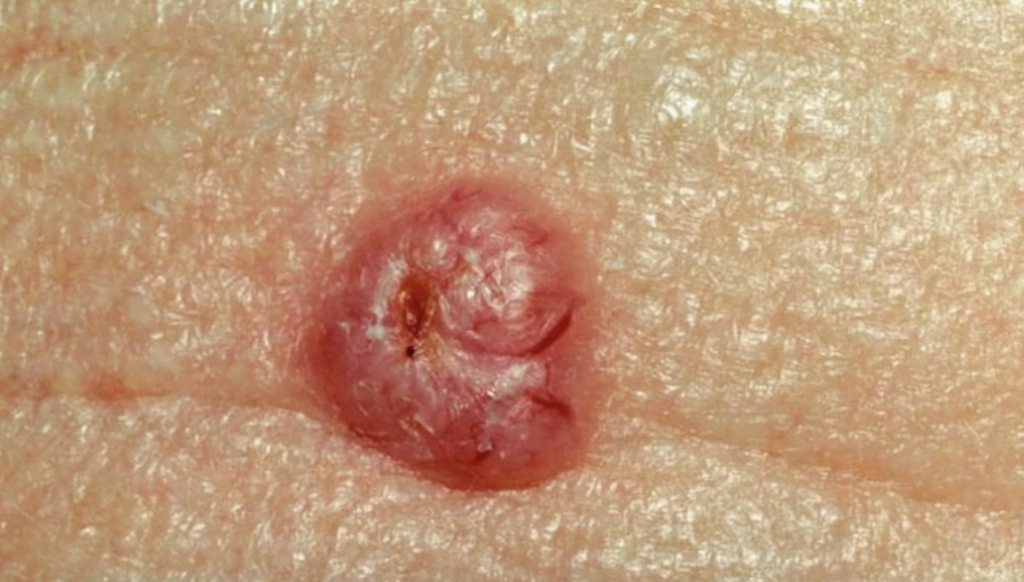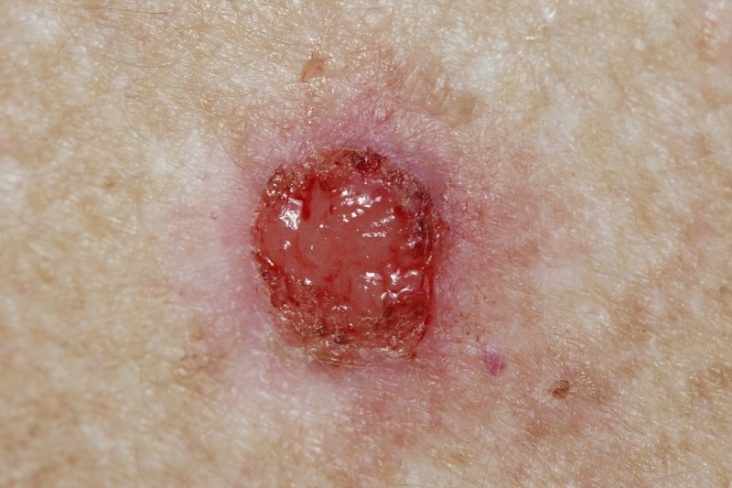
Basal Cell Carcinoma
Overview:
Basal cell carcinoma is the most common type of skin cancer, and can affect one in five Americans. BCC typically occurs due to excessive sun damage and therefore, is more noted in areas of sun exposed skin. Risk factors for basal cell carcinoma include fair skin, excessive sun damage, organ transplant, or history of ionizing radiation. While it is a slow growing cancer, it can lead to disfigurement and local invasion. Therefore, it should be treated.
Symptoms:
A basal cell carcinoma commonly presents as a “pimple” that will not go away, but it can also present as open sores, shiny bumps, and scaly dry patches. A basal cell carcinoma can itch, bleed, or develop some crust. Any such symptoms should be brought to the attention of your dermatologist.
As mentioned, basal cell carcinomas are slow growing and rarely metastasize. However, if left untreated, a basal cell carcinoma can cause local invasion, especially in critical anatomical areas, and lead to disfigurement.
Treatment:
Treatment is determined by the size and location of the lesion. Excision or electrodessication and curettage (scrape and burn) are usually performed on the trunk and extremities. Mohs surgery may be recommended for cancers on the face or other critical locations such as the hands and genitals. Radiation may be recommended when a patient is not a good surgical candidate. If it is a superficial basal cell carcinoma, then topical chemotherapeutic agents may also be recommended.
Avid use of sun protection with sunscreen at least SPF 30, wide brimmed hat, and sun protective clothing is integral to preventing multiple skin cancers.


